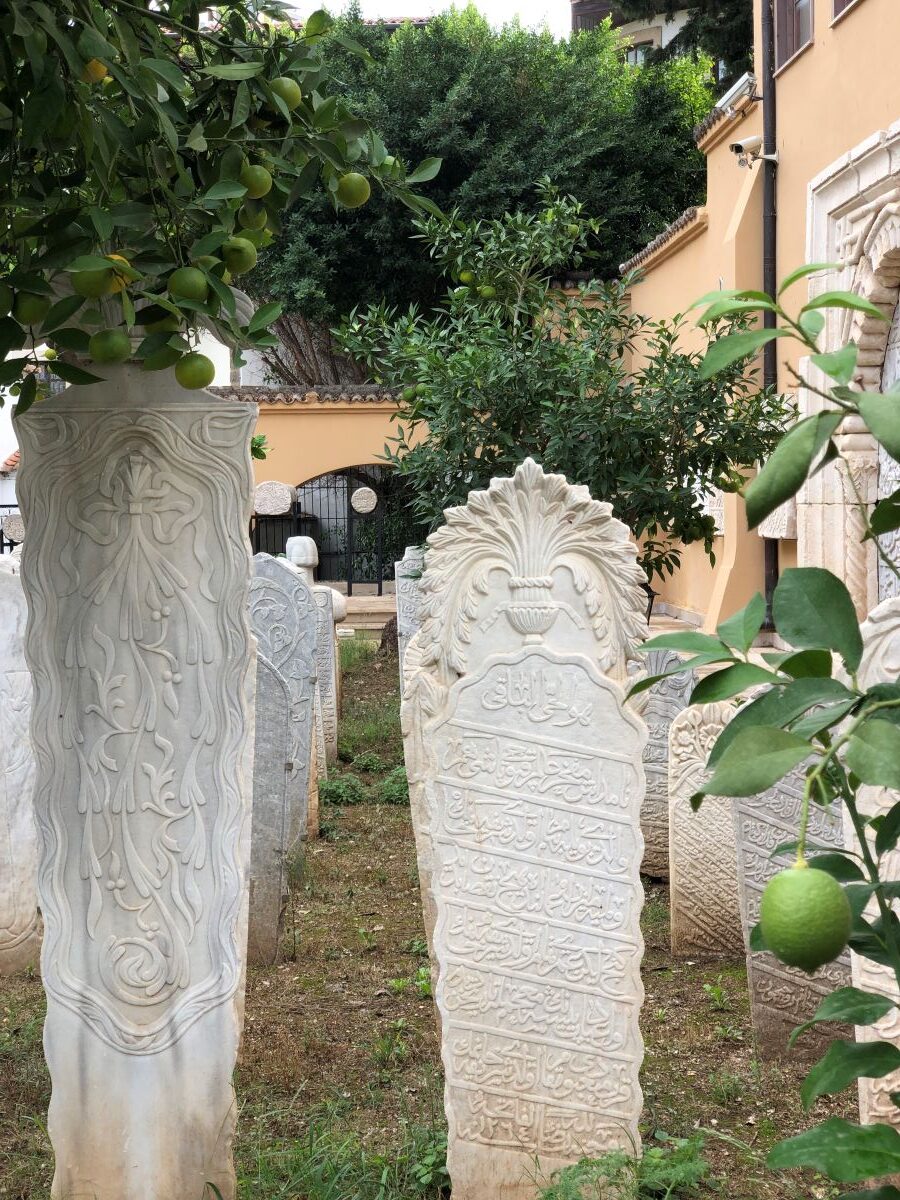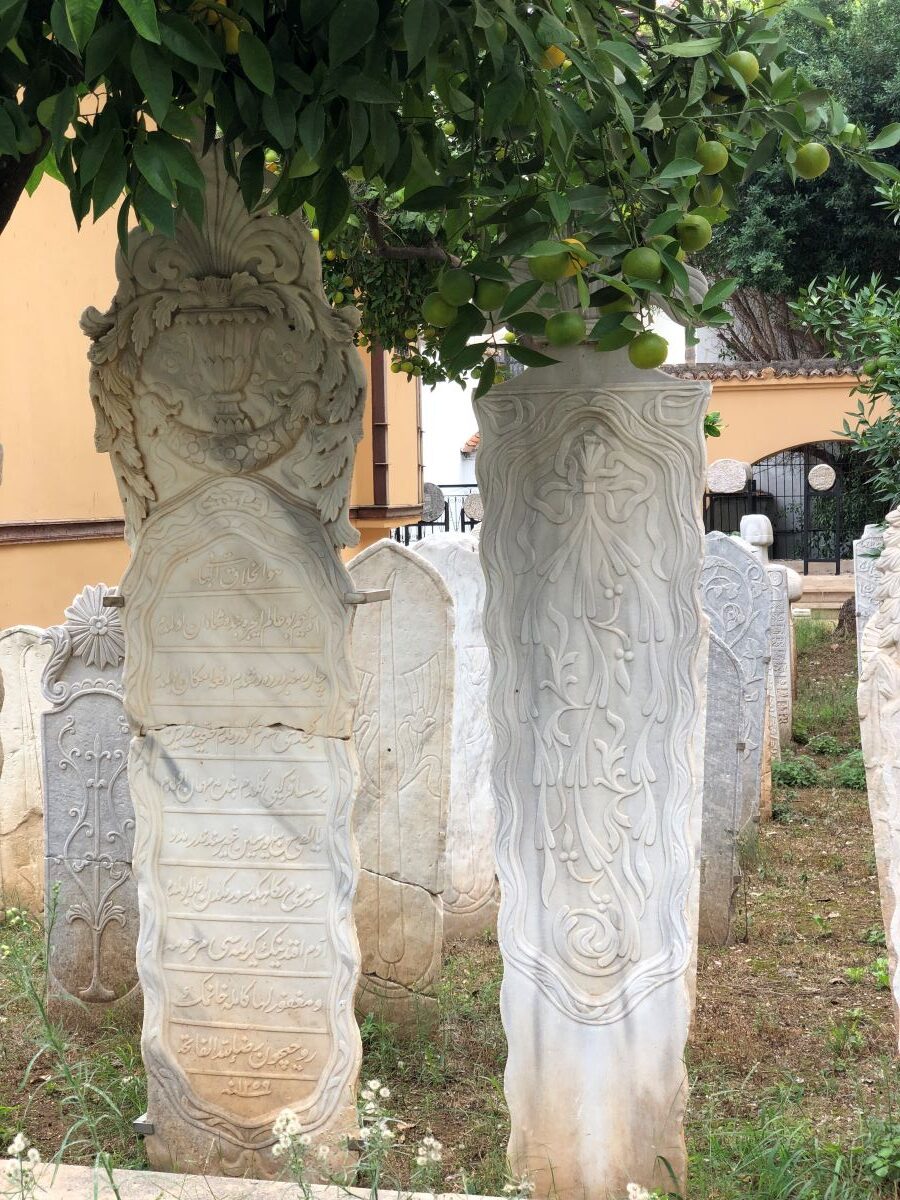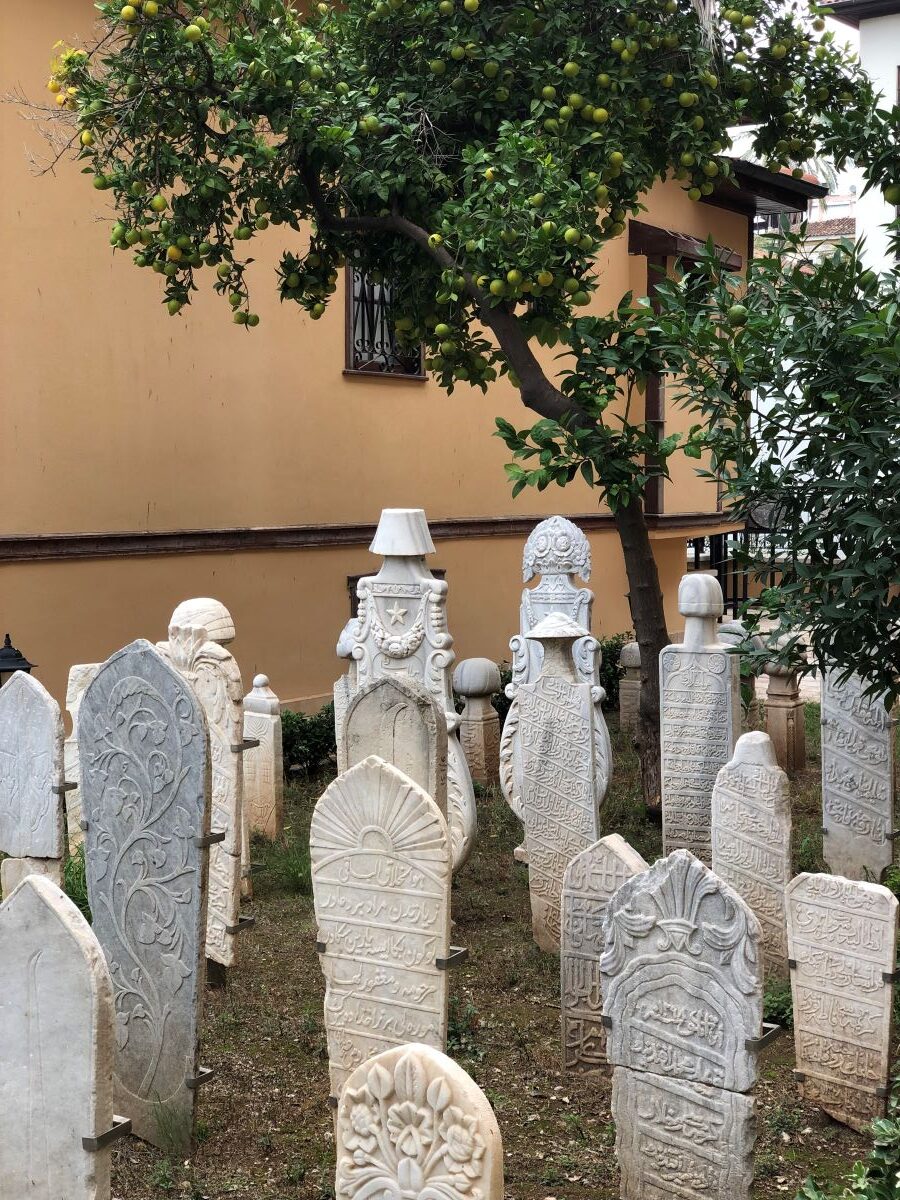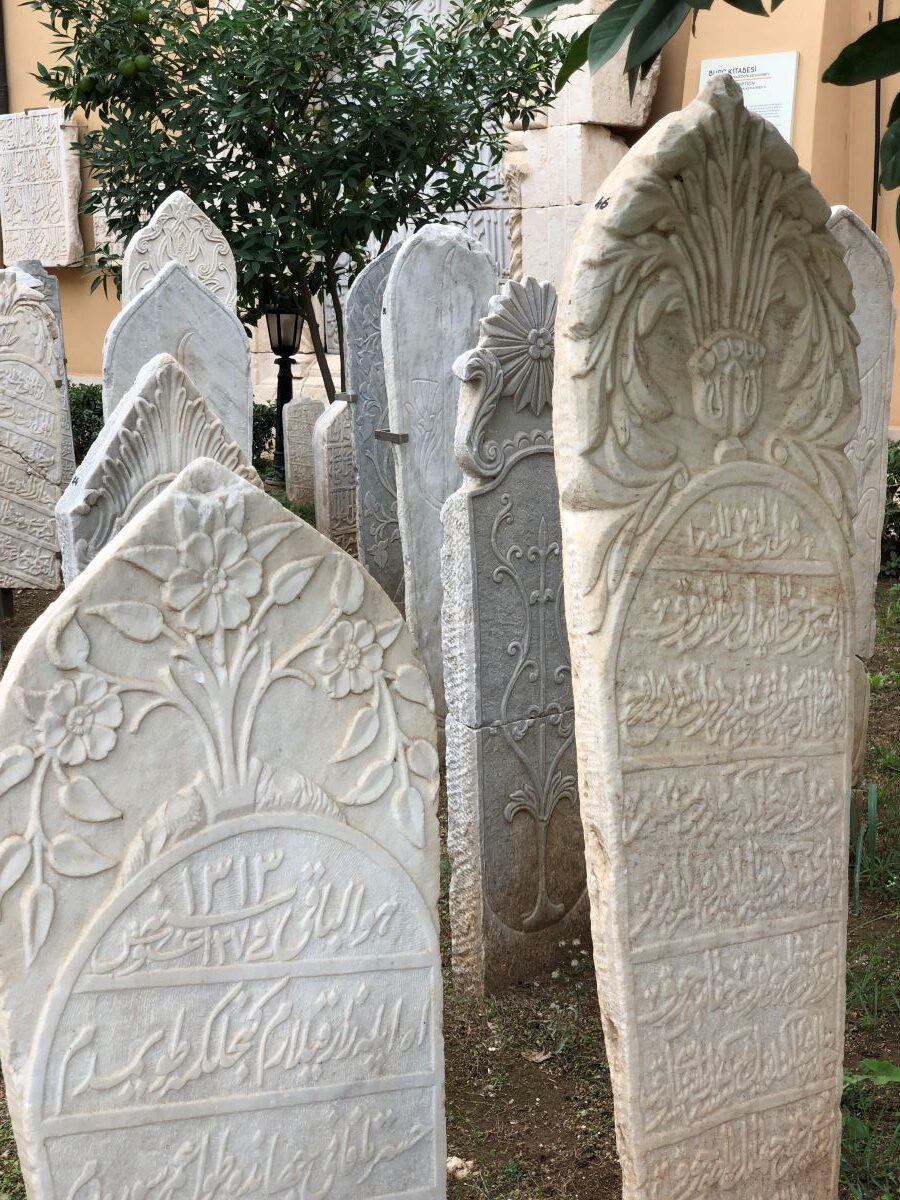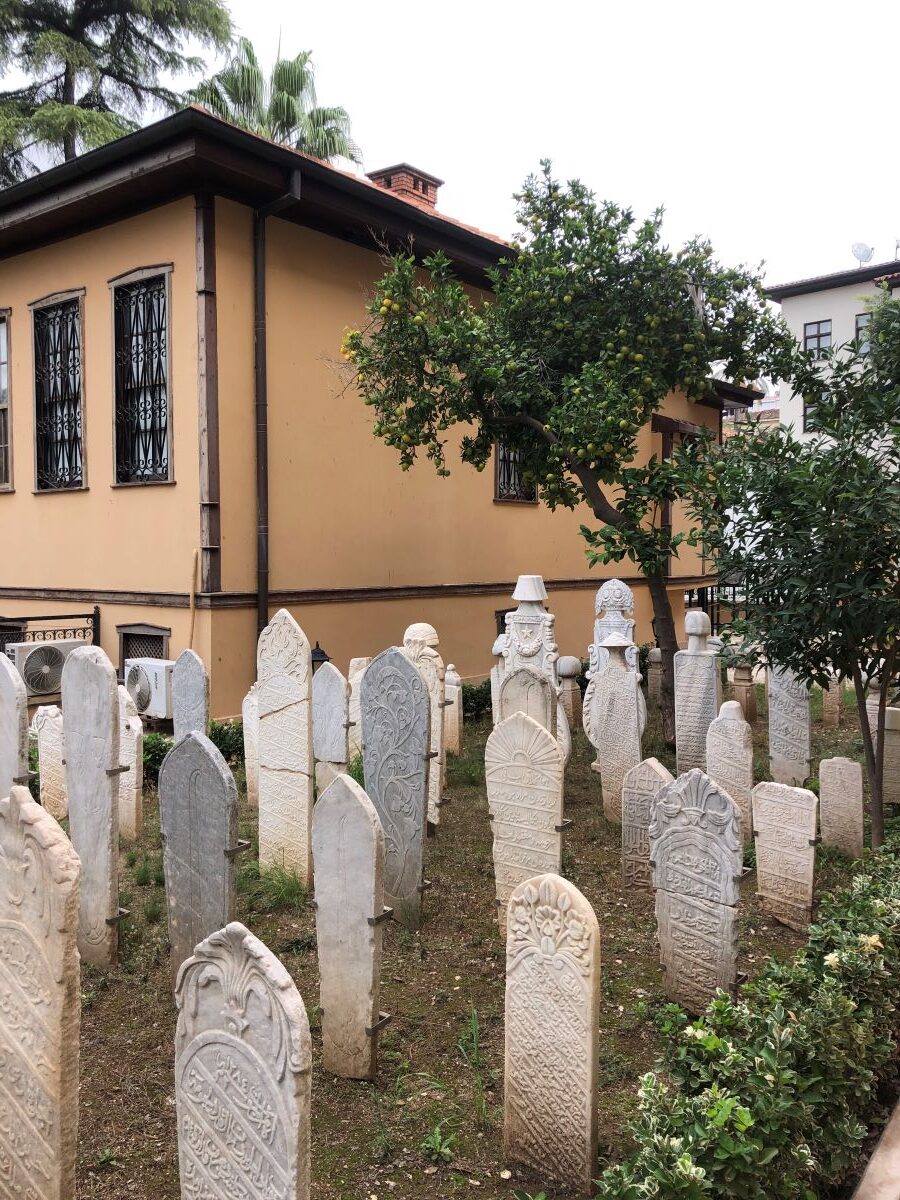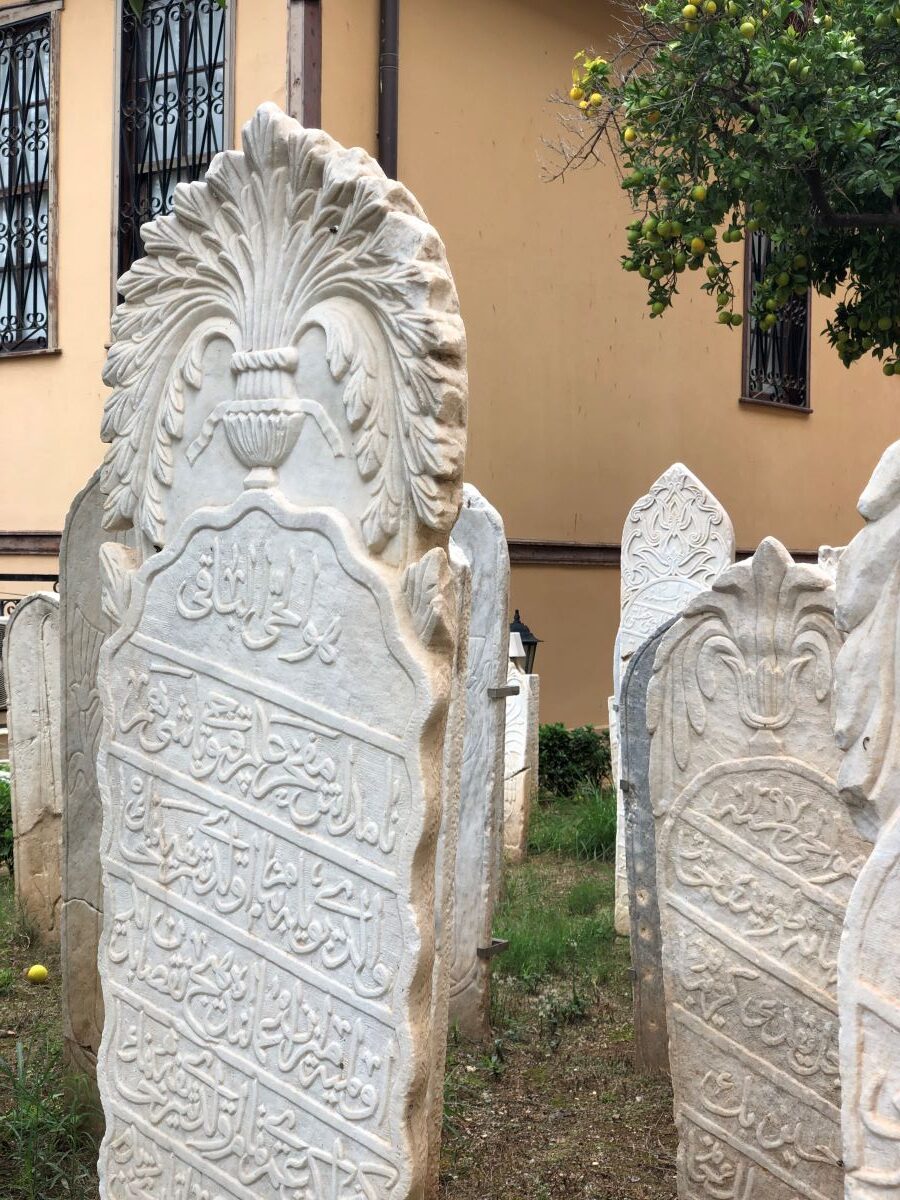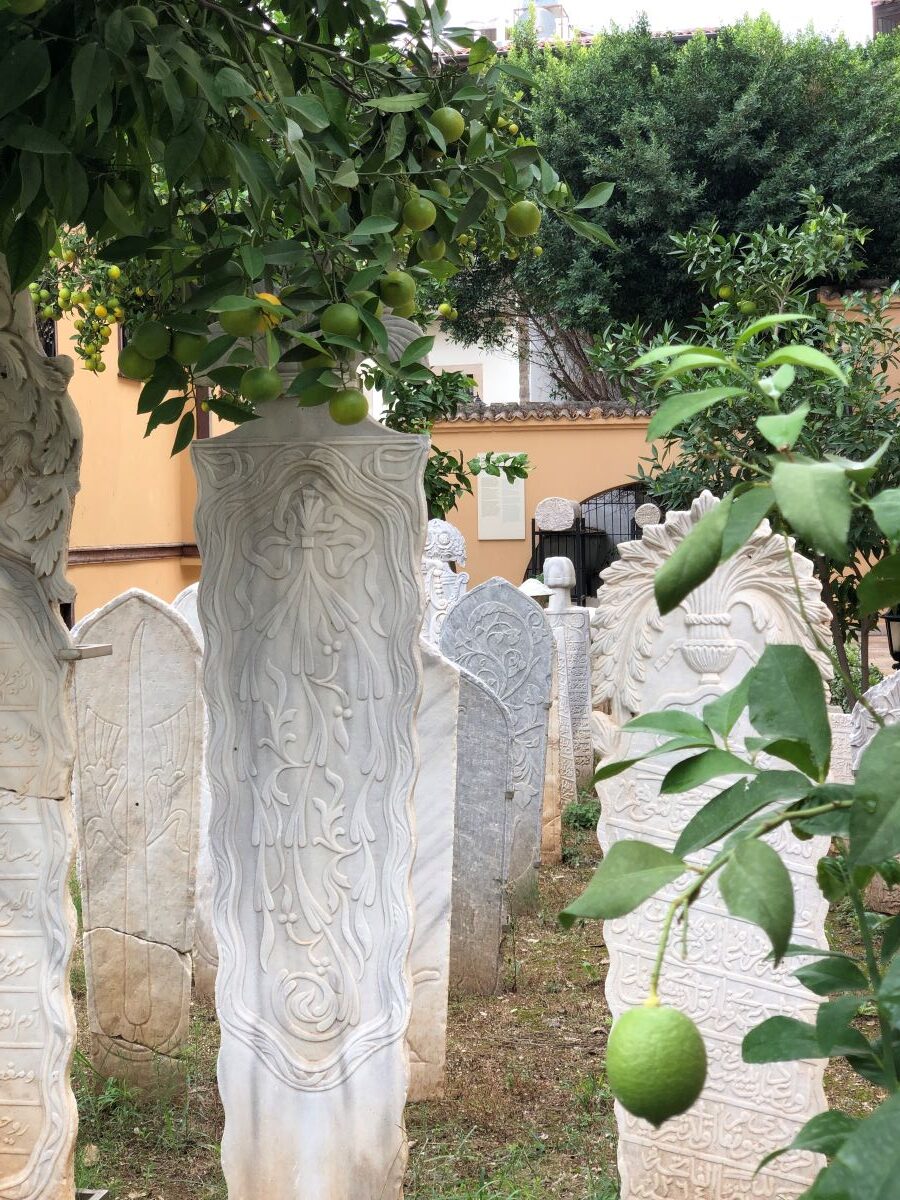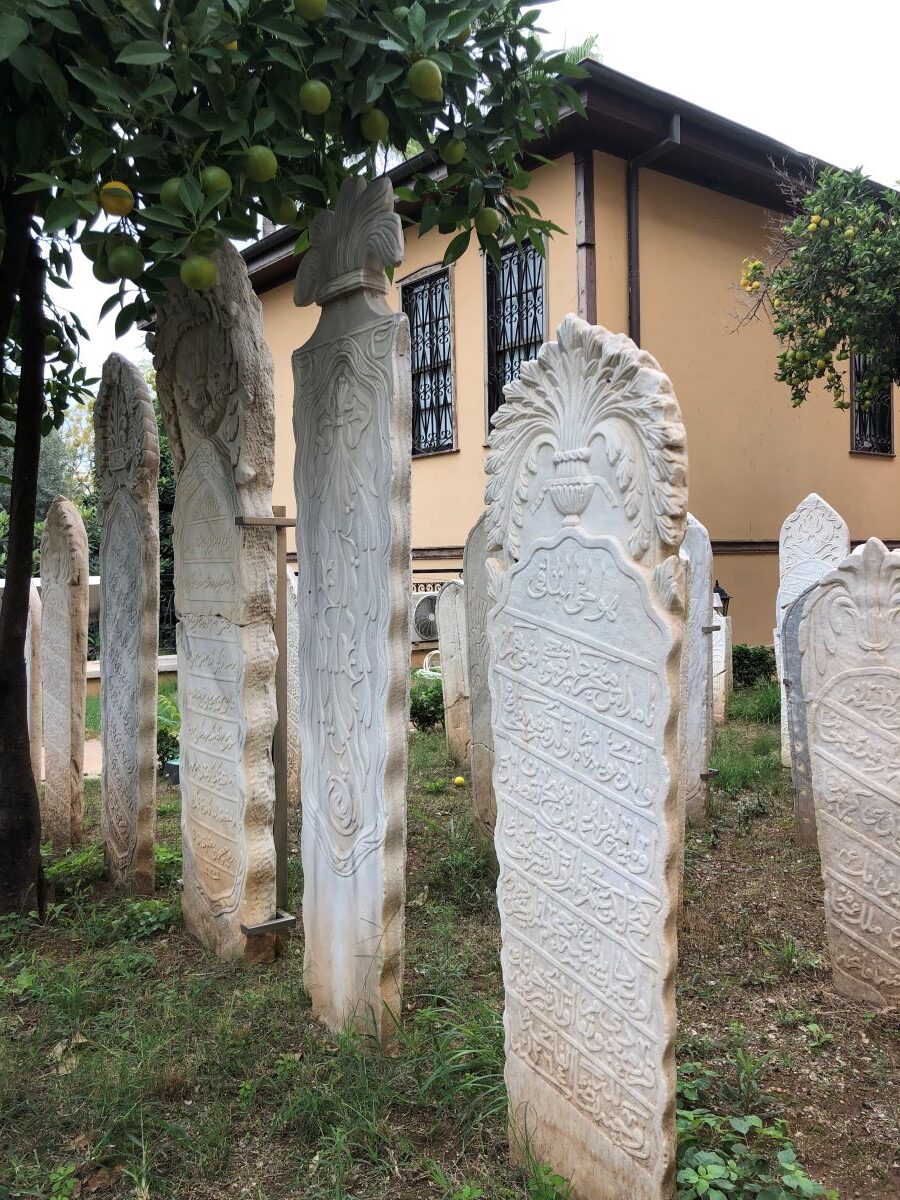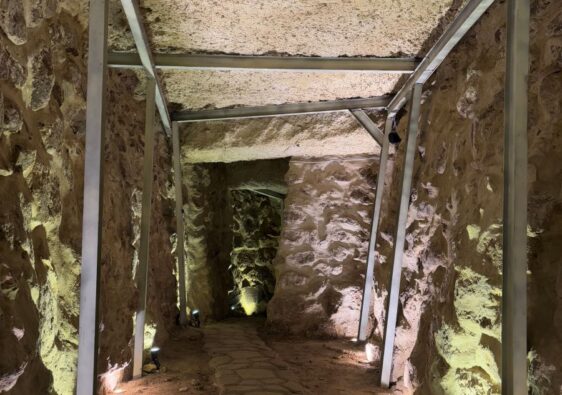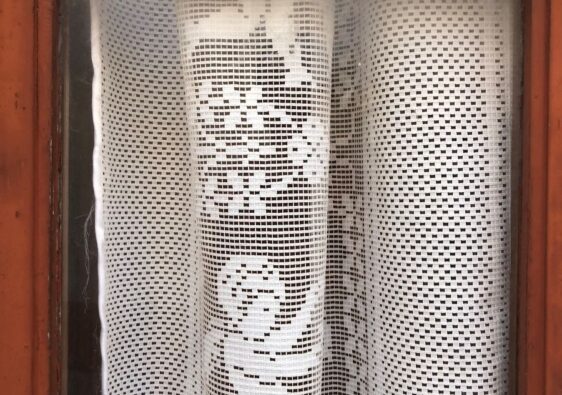I have a tradition of visiting a cemetery in each new country I explore. I’m not sure what the fascination is, but not only do I find most cemeteries utterly peaceful, they hold a profound beauty as well. I found a gem here in Kaleici, the tiny Ottoman cemetery in Antalya.
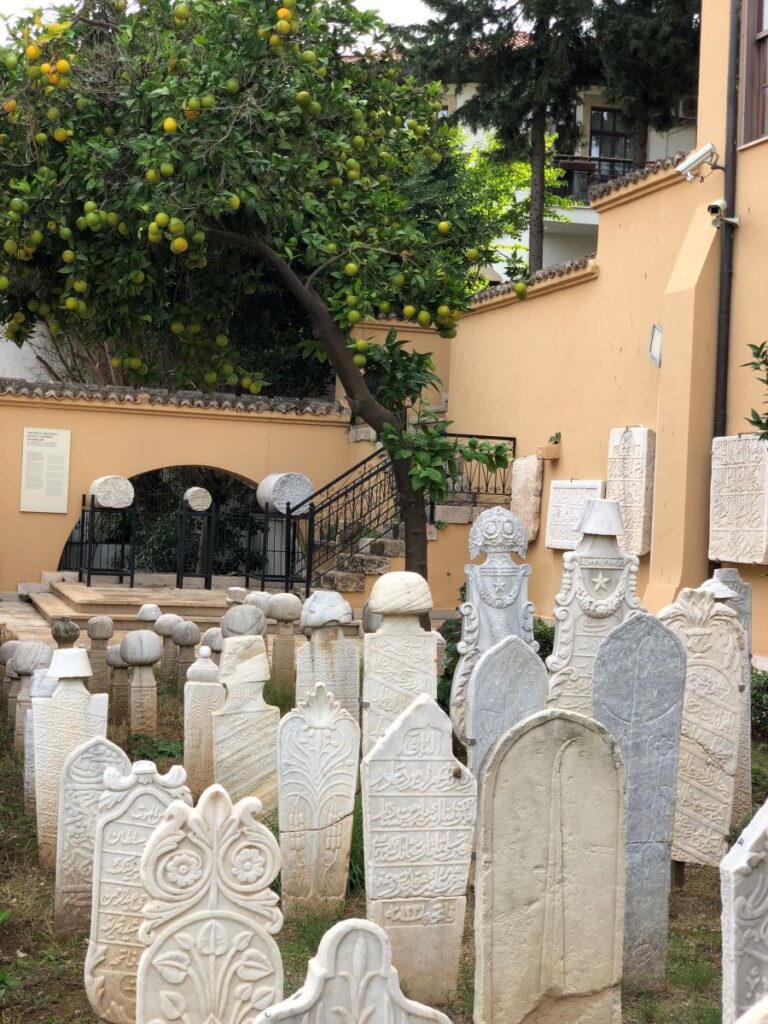
Ottoman Empire
Kaleici is the old town of Antalya. Surrounded by tall ancient walls built by the Romans 2000 years ago, the city remains a vibrant and incredibly historic part of the area. Conquered in 1391 and held for the next 500 years, the Ottoman empire formed a large part of the history here.
I would hazard to guess that most of what is seen today in Kaleici is indeed from this period of reign. The ottomans did not remove their deceased outside of the city, to a specific place. Instead, they were buried in public areas, near mosques or in the centre of town.
Cemetery
Nestled in between two old 19th century mansions, is a beautiful Ottoman cemetery, right in the heart of Kaleici. I came upon this cemetery quite by accident and was awestruck immediately.
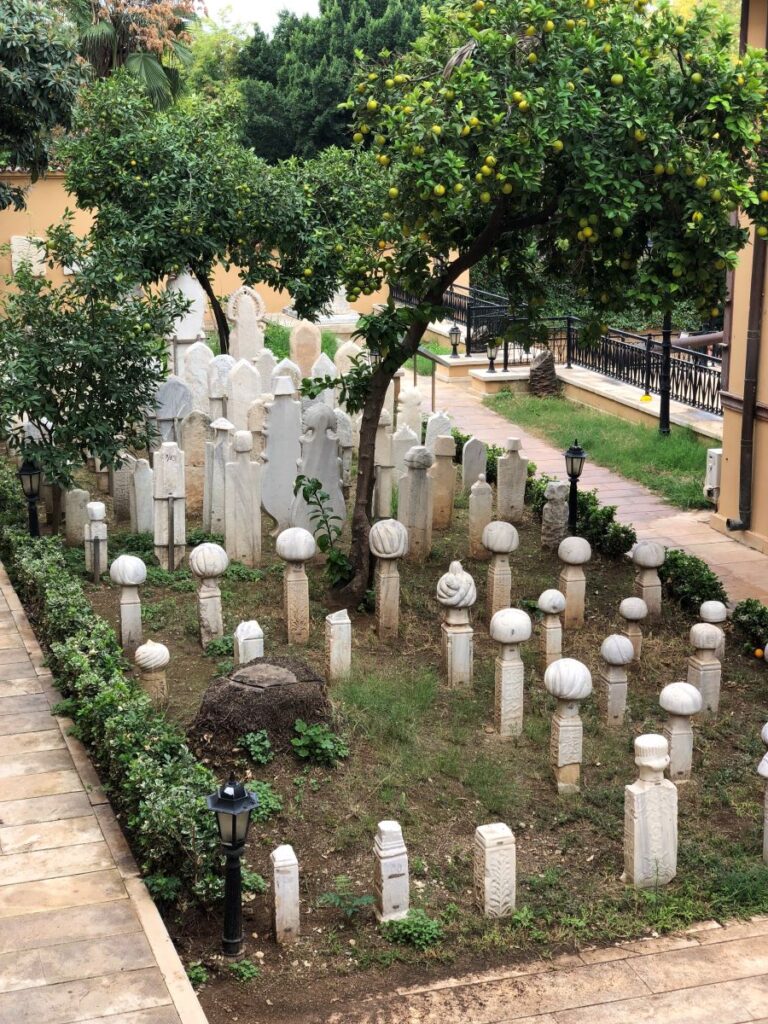
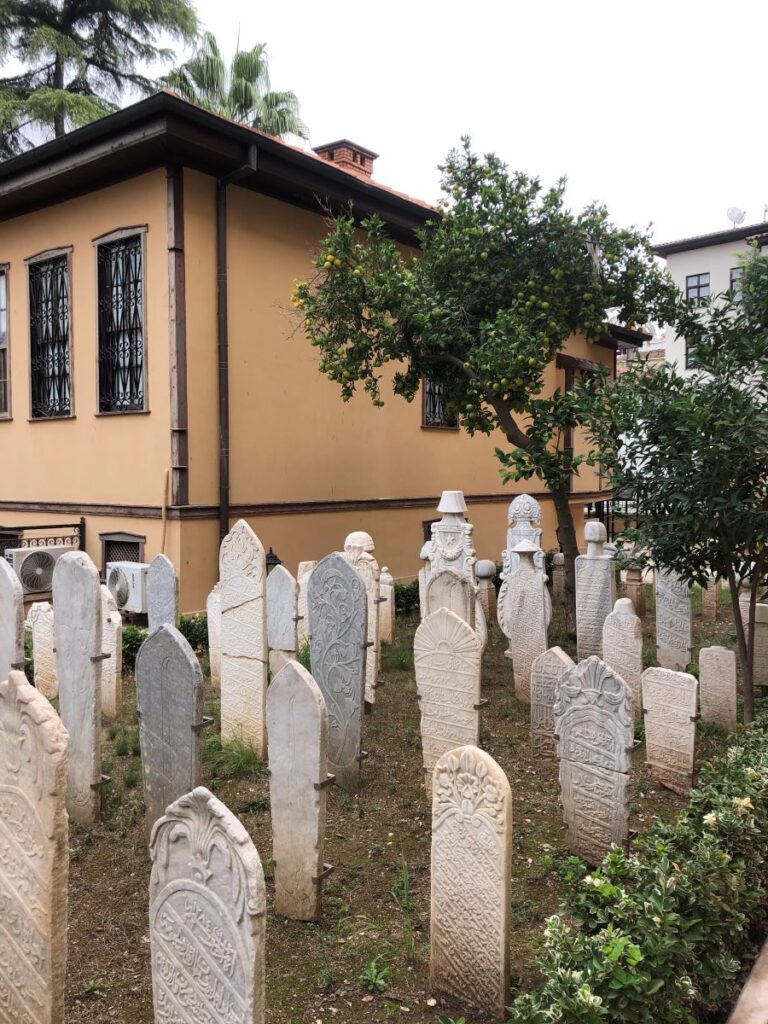
Laid out in a rectangular garden space, are a series of graves. Hanging over them are citrus trees loaded with their bounty.
Headstones
Each headstone is made of carved white marble and are in straight rows, looking almost like a line of soldiers. Towards the back are shorter ones and at the front are the taller grand tombs. From a sign at the cemetery, I can provide the following information, which is fascinating beyond what I dreamed.
The gravestones of women usually had flowers at the top. Under this were the necklaces and forehead jewellery, engraved in exact replica, of the ones worn.
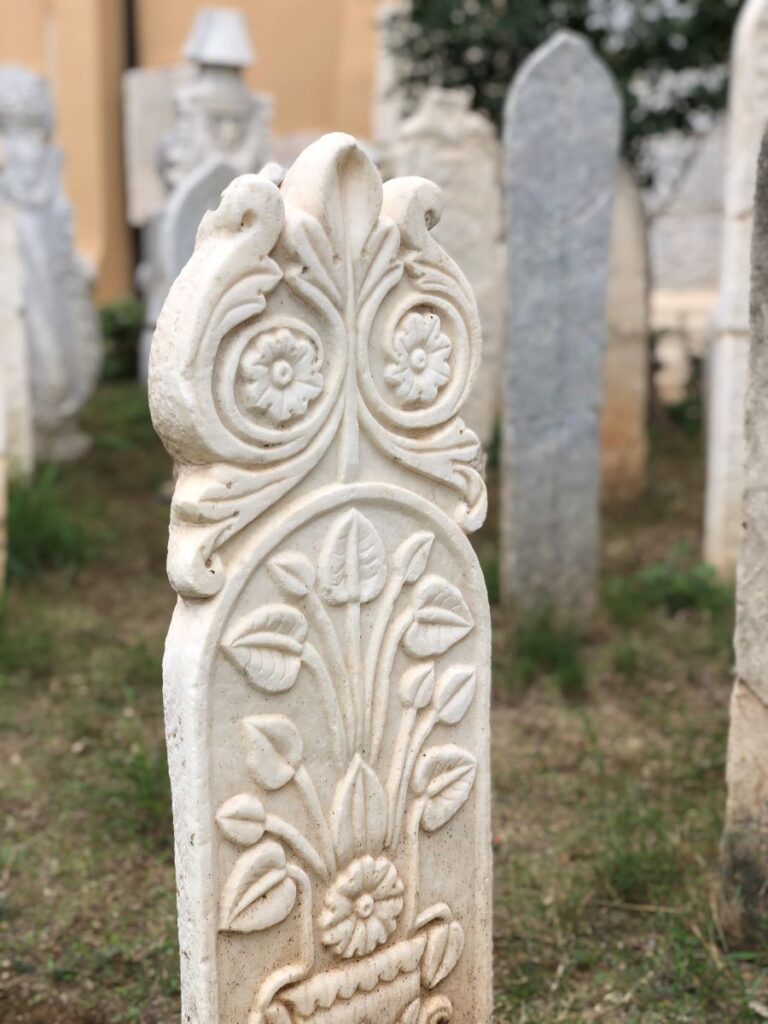
If the gravestone shows headgear, it belonged to a man. These were either in the form of a fez, turban or crown.
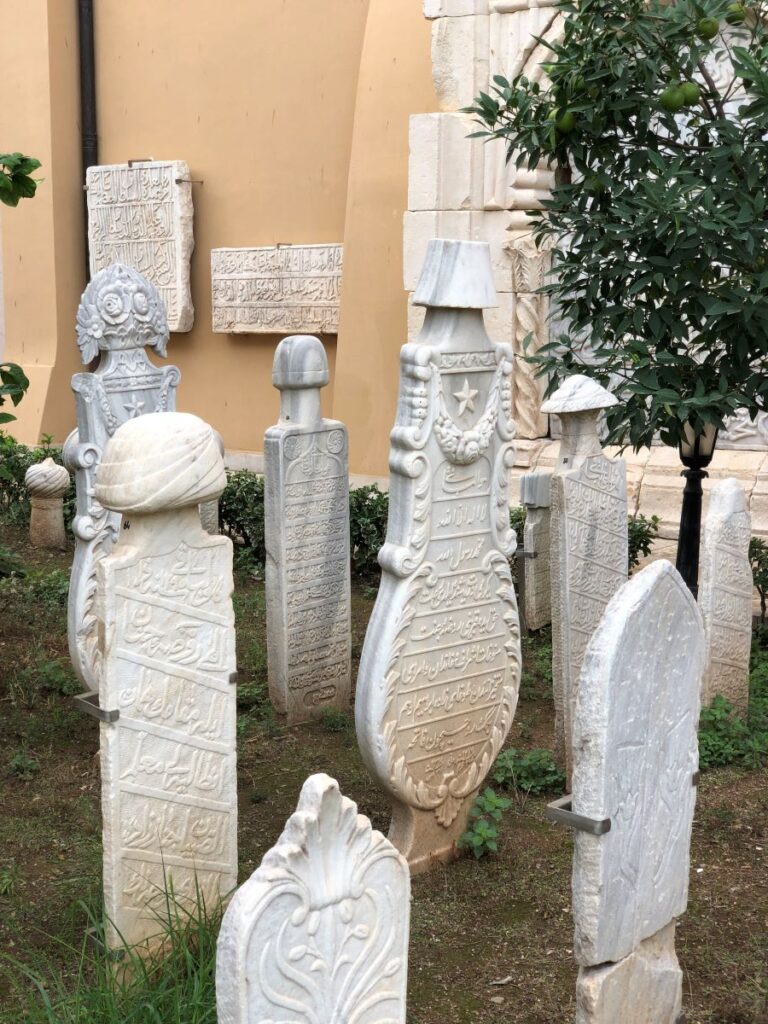
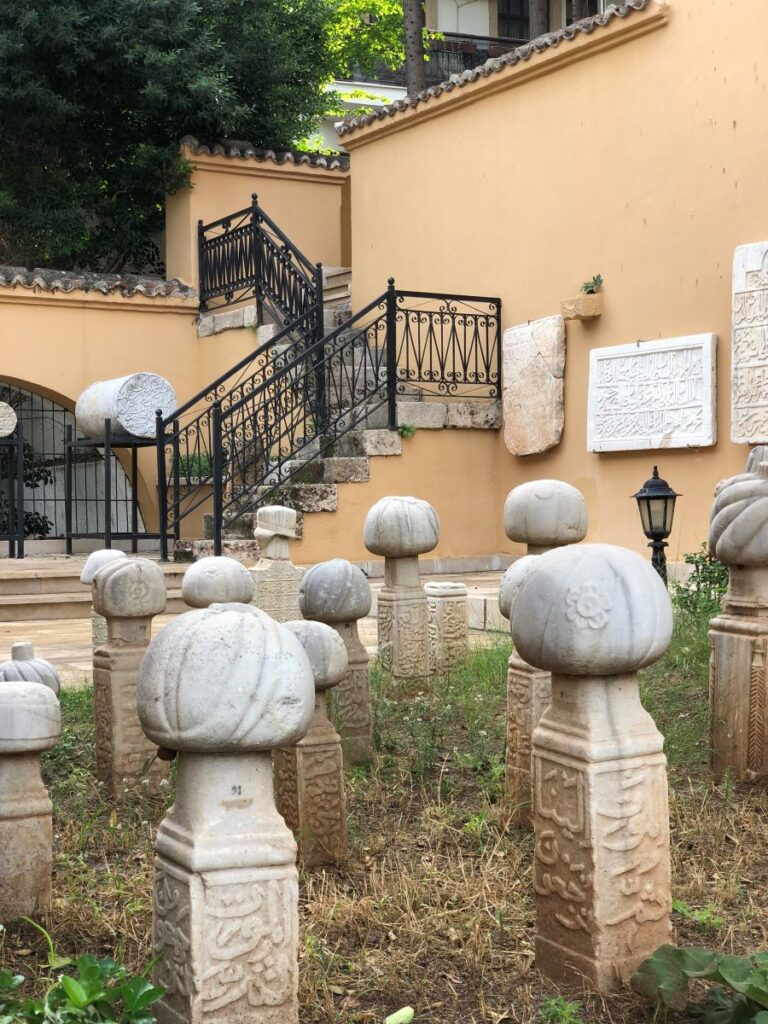
Details
Beneath this was personal information provided about the person. If they died at a young age there would be flowers, a palm tree for pilgrims, a rope around the neck indicated the person was hanged, and other symbols indicated the profession of the individual.
The gravestones of unmarried women who died at a young age were constructed in the shape of a veil with a rose bud carved on the base stone.
Any stone that was left uncarved belonged to an executioner.
My feelings, walking around this small intimate cemetery were ones of awe. Of course I could not read any of the writing, but the carvings themselves as well as the shapes of the stones evoked so much emotion.
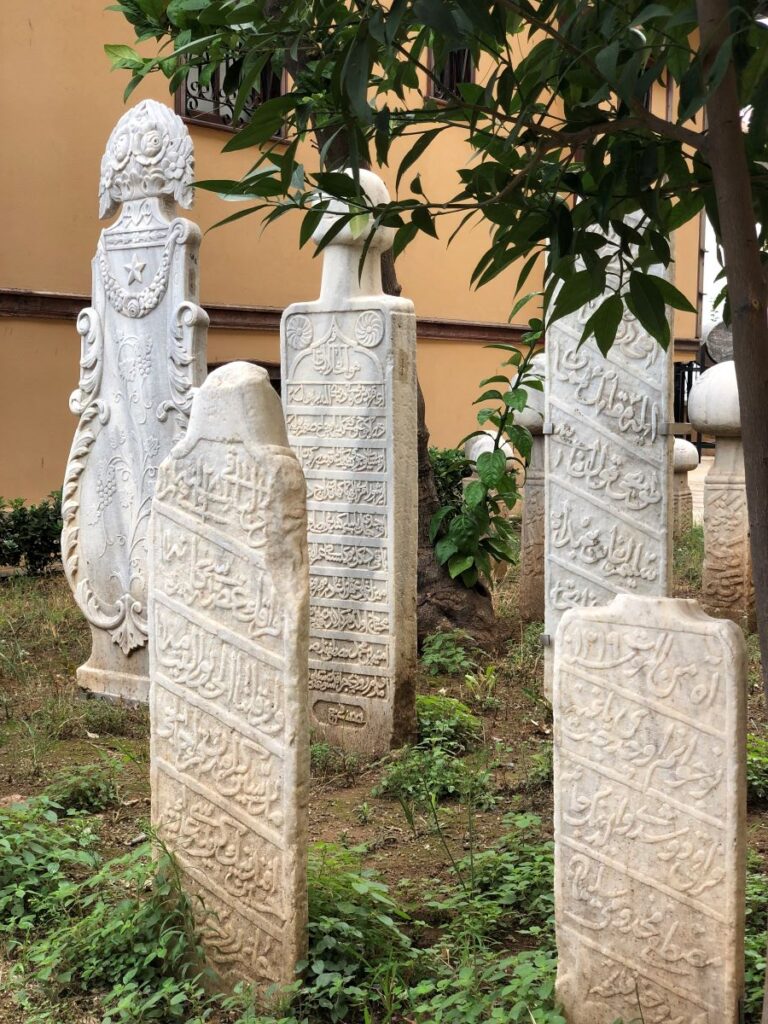
The setting is quiet, secluded and peacefully surrounded by the walls of the mansions. You can find this amazing treasure on the grounds of the Antalya Ethnographic Museum. There of course are other objects to see in the gardens, such as statuary, plaques and cannons, but without a doubt, the Ottoman cemetery is the jewel for me.
